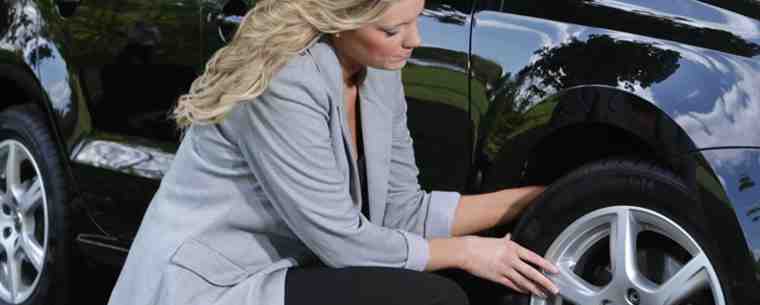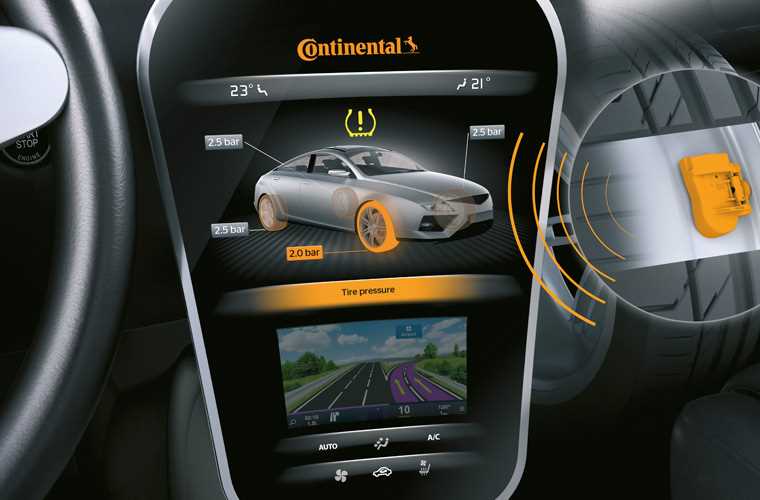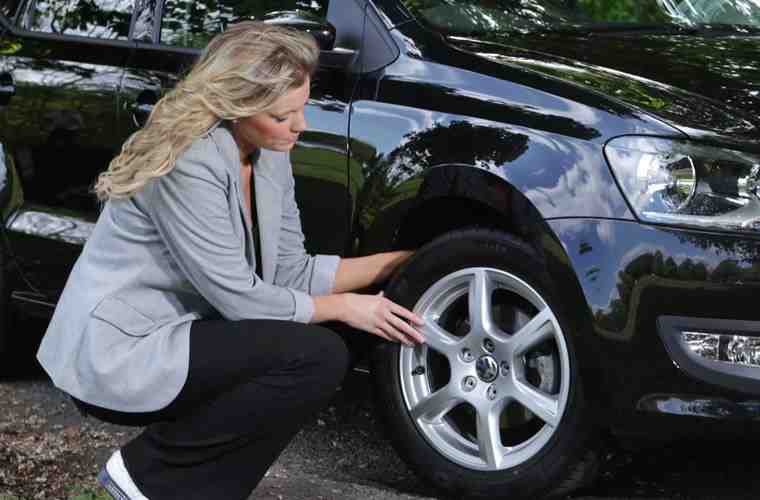Having the correct tyre pressure matters
| Monday 6th September 2021 1:31pm

Who can remember the last time they had to look under the bonnet of their car? If, like many people, you haven’t looked in a while then don’t worry, you’re not alone. With technology the way it is these days, modern cars are just more reliable than they ever used to be. And even the things we should check regularly – like oil or coolant levels – often slip our mind, rarely considered.
It’s no wonder we’re also less likely than ever to check our tyre pressures regularly. But the truth is we need to because this really matters. Even technology can’t excuse us – even if your car is fitted with a Tyre Pressure Monitoring System (TPMS), you still need to check it.
With driver safety our number one consideration, at Kwik Fit, our ambition is to keep you and your family as safe as possible on the road. But we also want to help you save money – and avoid fines. This tyre safety article explains why tyre pressure maintenance is essential, and how to go about checking tyre pressures.
Tyre safety first, always
When it comes to tyre pressures, everyone on the Kwik Fit team knows from experience that too much or too little air can be dangerous.
Under-inflated tyres:
These are dangerous because they directly affect the way your car handles, and your ability to stop quickly. And since under-inflated tyres are softer, sharp objects (such as nails and glass) don’t always glance off them, increasing the chances of getting a puncture.
Over-inflated tyres:
With over-inflated tyres there is an increased risk of high-speed blow-outs since there is no ’give‘ in the tyre shape, resulting in higher stress loads. A high-speed blow-out has obvious consequences that none of us want to have to face.

As well as being unsafe, incorrectly inflated tyres also wear out unevenly and, as a result, need replacing more often. Over time that’s an additional expense for you. Uneven tyre wear occurs differently, depending on how the tyres are inflated. Under-inflated tyres wear quicker at the edges, which affects driver handling. Over-inflated tyres wear more at the centre, resulting in a loss of tyre tread where it makes most contact with the road, and where you need the most grip.
Another money saver
As our tyre inflation graphic above shows, under-inflated tyres have more contact with the road, and this results in the generation of more ‘rolling resistance’, or friction. As a result your car has to use more fuel than it would otherwise have to if the tyres were inflated correctly.
If you’re a bicycle rider you’ll know all about this already. All cyclists know that it’s harder to ride from A to B if your tyres are a little flat. Cycling with under-inflated tyres, the rider feels the extra effort required in their legs and lungs, because they’re having to expend more energy. The same is also true when driving a car. If your car’s tyres are under-inflated by 15 PSI (or 1 Bar), you’ll be spending more on your annual fuel bill unnecessarily. And let’s not forget that it’s not just money you’re wasting but precious fuel too, resulting in the unnecessary production of additional CO2 emissions. We all know that everyone needs to reduce their carbon footprint, right? The Kwik Fit team thinks so.
TPMS – Tyre Pressure Monitoring Systems

As a result of all these reasons, all new vehicles sold in the EU must have Tyre Pressure Monitoring Systems (TPMS) installed. This technology allows sensor valves to automatically monitor each tyre’s pressure. If the tyre pressure falls, a warning light on the vehicle’s instrument panel alerts the driver, prompting them to check their pressures manually.
Don’t forget that if your vehicle has TPMS you also need to ensure that it is maintained by a qualified technician. A faulty TPMS is an automatic MOT fail.
Premium tyre manufacturers like Continental are world leaders in the field of driver safety technology, including Tyre Pressure Monitoring Systems and Electronic-Tyre Monitoring Systems (eTis). Driver safety is ingrained throughout their long, illustrious history, and is the driving force behind their Vision Zero initiative to end driver accidents, injuries, and fatalities.
Tyre pressures: how to check yours

In the UK, the Department for Transport and Continental Tyres both recommend that you check your tyre pressures at least once a month, even if your vehicle is fitted with TPMS.
TOP TIP: Tyre pressure readings are more accurate when the tyres are cold. As such, it’s a good idea to check them before you begin a journey. Alternatively, when you fill up at the petrol station, you can use the tyre services available.
FIND THEM: You’ve probably seen your vehicle’s correct tyre pressure values printed on the inside of the fuel cap, or inside the driver door.
HOW TO: First, remove your tyre’s valve dust cover and attach the air hose. The air hose also measures tyre pressure. Next, either top up or release air until the pressures are correct for all wheels.
Driver safety is of the utmost importance to the entire Kwik Fit team. If you’re unsure how to check your tyre pressures, or how to top up or release the air, speak with one of our experienced tyre professionals. You can find your nearest Kwik Fit centre here.
Any facts, figures and prices shown in our blog articles are correct at time of publication.
Featured Articles
Is it Illegal to Drive With One Headlight?
Saturday 19th July 2025
Wondering if it’s illegal to drive with one headlight? Learn about the safety risks and penalties of illegal blown bulbs and why you should fix them promptly.
Air Con in EVs & Hybrids: Experts Answer Your Questions
Monday 30th June 2025
Does air con drain EV batteries? Can you use the air con while charging an electric car? Find out the answers to these questions & more from Kwik Fit’s experts.
Why Is Your Car Making a Noise? Fixes & Tips
Friday 13th June 2025
When your car starts making unexpected noises, it can certainly be quite disconcerting; it may be nothing to worry about, but here’s what you need to know.









